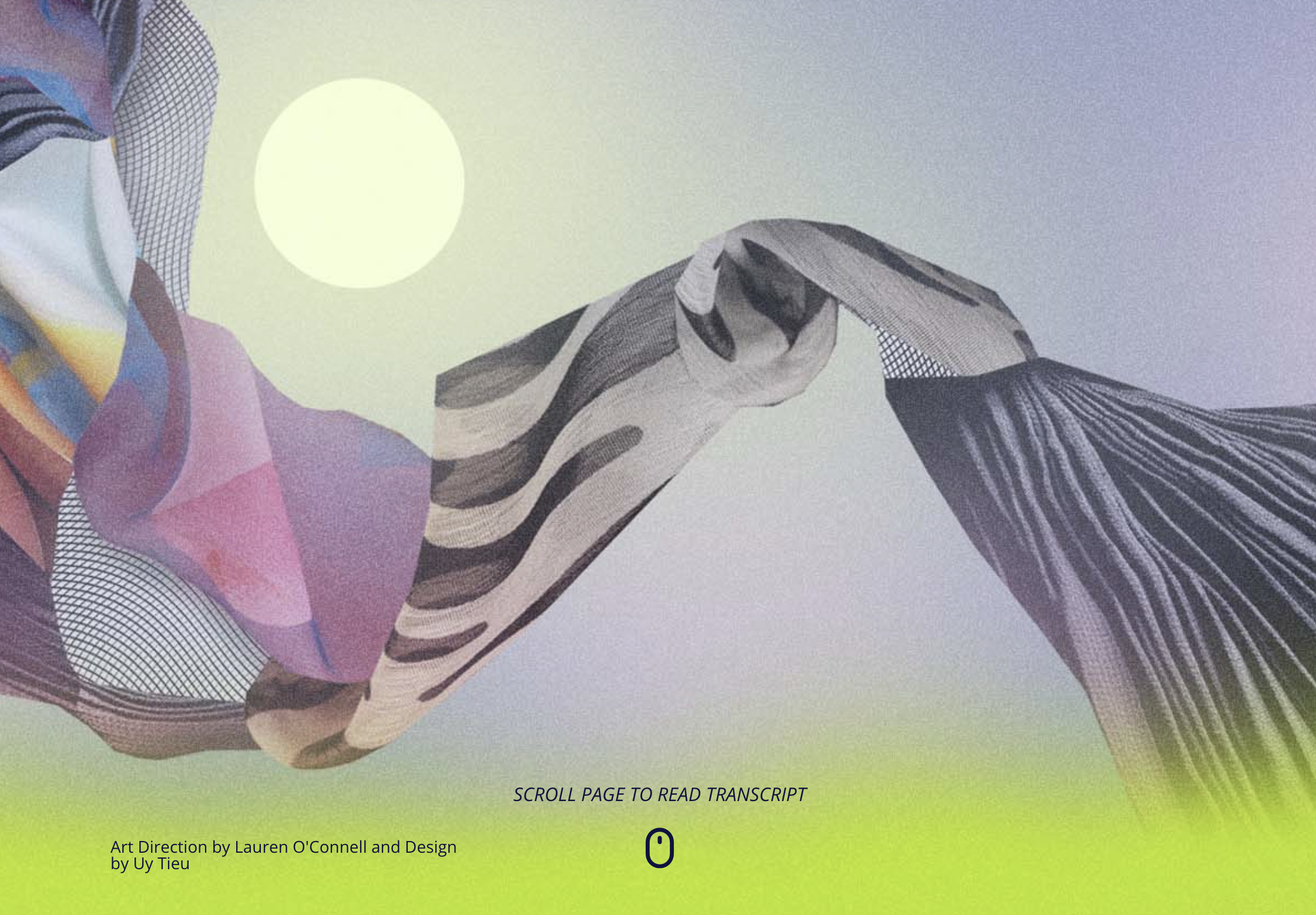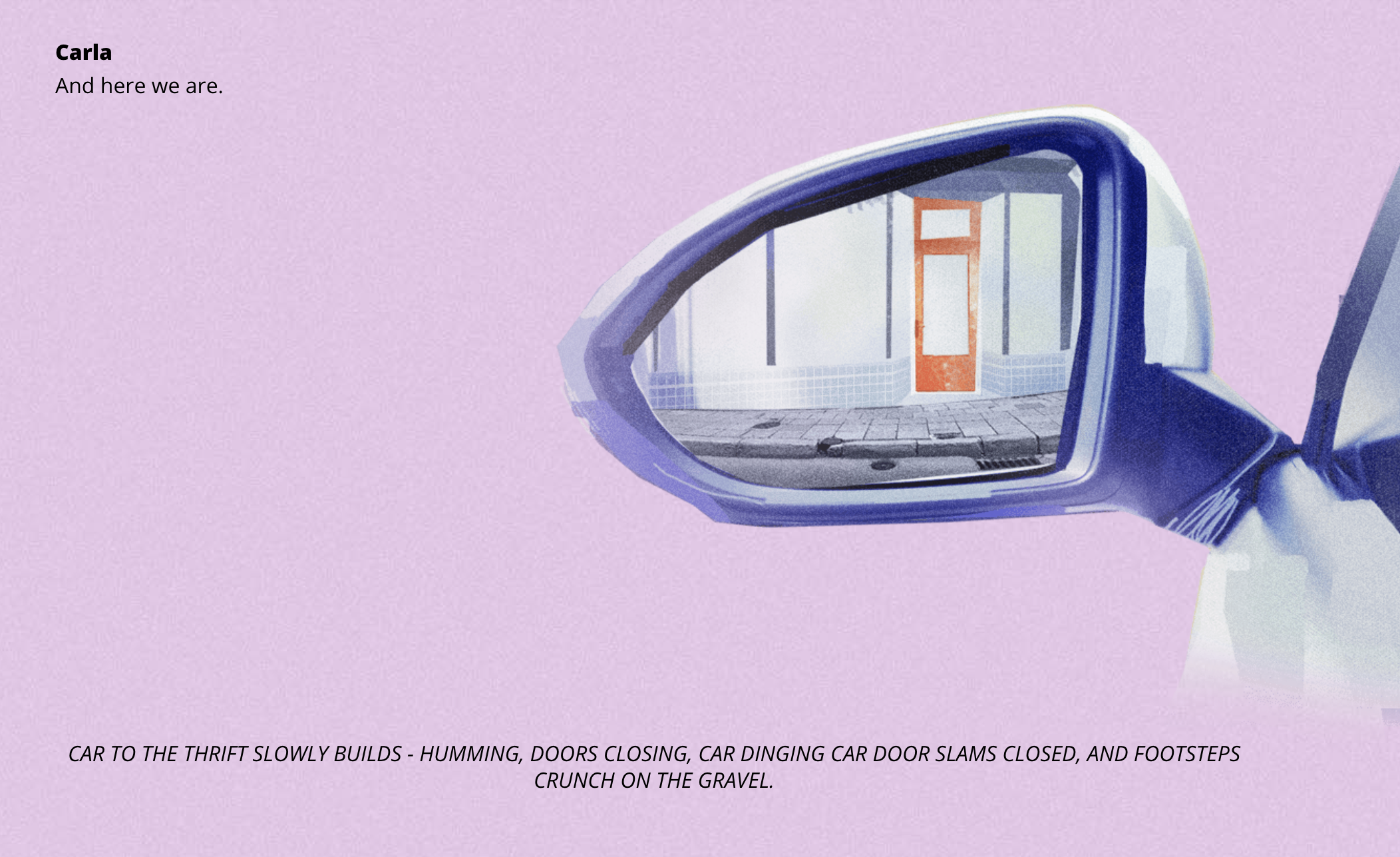
You listen to a podcast. That’s the only option, right? For their new show More Than This, Vox Media set out to create a podcast that could also be seen and felt. The result was an “immersive transcript” that’s accessible to deaf and hard of hearing audiences.
More Than This, hosted by author and 2BG founder Danielle Prescod, tells stories of people who “set new paths for themselves” — changing careers, countries, or their own community. The series is branded content, sponsored by prepaid phone provider Straight Talk Wireless and created and produced by Vox Creative without input from Vox’s editorial staff. (“The goal of the podcast is to reach potential Straight Talk consumers, specifically those who feel limited in some way by the same way of doing things, like paying for their cell phone bill because they’re committed to a contract,” according to a press release.) It’s not the studio’s first standalone podcast; the Ben and Jerry’s-sponsored Who We Are, which examined the harder-hitting topic of systemic racism in America, launched last fall and made it onto Apple’s list of top 10 history podcasts.
Transcripts are hardly uncommon in podcasting but they’re often an afterthought, littered with omissions and inaccuracies thanks to automated transcription. Even if someone adds a [pause] or [laugh], you’re losing a lot of what makes the audio version compelling. Vox Media wanted to do something special — and different — for More Than This.
“We know transcripts are a popular product in podcasting but with the features we built for More Than This, we wanted to elevate the experience of a transcript, by making it more visual by translating the emotions, pacing, and atmosphere of the podcast into a visual medium,” said Annu Subramanian, supervising producer of audio at Vox Creative.
The accessibility-friendly experience was inspired by musician Mandy Harvey, featured in the first episode, who lost her hearing as a music student in college. The transcripts – art directed by Lauren O’Connell and designed by Uy Tieu — use visuals to convey pauses and other moments of inflection.


They also read like a play at times, describing the speech and singing:

The transcripts, like in this example from episode two, try to put the reader at the scene:

Vox Creative said it worked with a team of engineers, graphic artists, and user experience designers to create the new product. (Vox, including its editorial side, hasn’t created anything similar before and Subramanian said she hadn’t seen anything quite like their immersive transcript elsewhere.)
The visual experience was also tested by a focus group of deaf and hard-of-hearing users led by disability activist and accessibility consultant JamiLee Hoglind.
“Within the podcast industry, it’s sacred to discover an authentically accessible podcast that is engineered, designed, and created with an accessibility lens for approximately over 400 million of Deaf and Hard of Hearing people globally,” Hoglind wrote in a note on accessibility. “This podcast’s visual experience is the first of many. Not only will this be a model for others, this will also elevate the industry to continue prioritizing accessibility to the next level.”
More Than This has released three of six episodes so far. You can listen to the podcast or read through the immersive transcripts here.